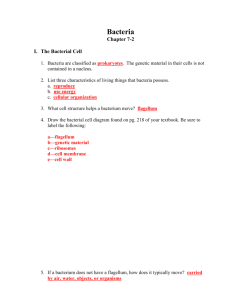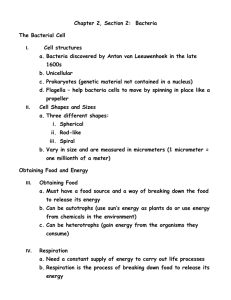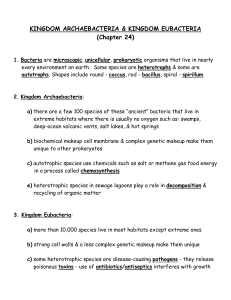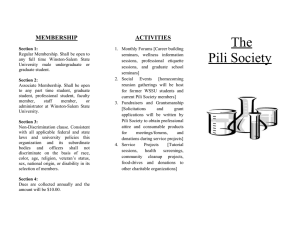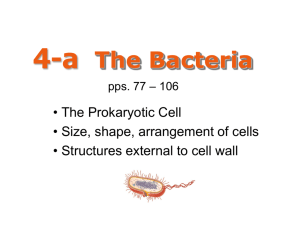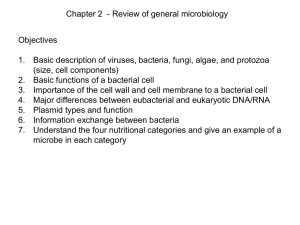Bacterial Structure and Function cards -
advertisement
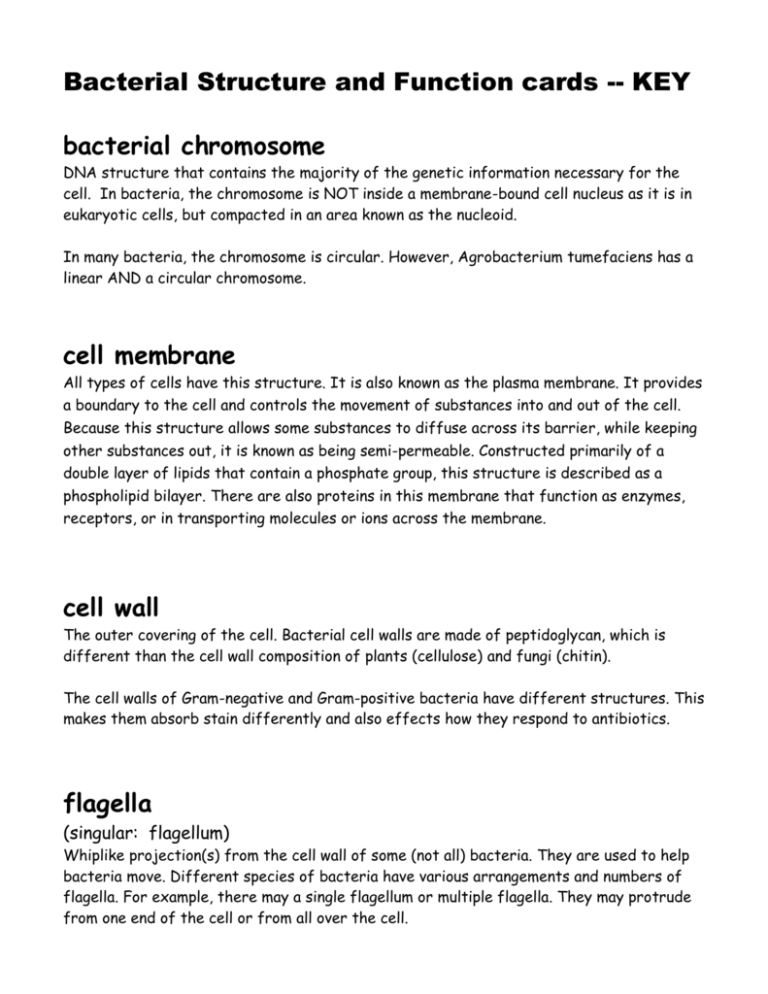
Bacterial Structure and Function cards -- KEY bacterial chromosome DNA structure that contains the majority of the genetic information necessary for the cell. In bacteria, the chromosome is NOT inside a membrane-bound cell nucleus as it is in eukaryotic cells, but compacted in an area known as the nucleoid. In many bacteria, the chromosome is circular. However, Agrobacterium tumefaciens has a linear AND a circular chromosome. cell membrane All types of cells have this structure. It is also known as the plasma membrane. It provides a boundary to the cell and controls the movement of substances into and out of the cell. Because this structure allows some substances to diffuse across its barrier, while keeping other substances out, it is known as being semi-permeable. Constructed primarily of a double layer of lipids that contain a phosphate group, this structure is described as a phospholipid bilayer. There are also proteins in this membrane that function as enzymes, receptors, or in transporting molecules or ions across the membrane. cell wall The outer covering of the cell. Bacterial cell walls are made of peptidoglycan, which is different than the cell wall composition of plants (cellulose) and fungi (chitin). The cell walls of Gram-negative and Gram-positive bacteria have different structures. This makes them absorb stain differently and also effects how they respond to antibiotics. flagella (singular: flagellum) Whiplike projection(s) from the cell wall of some (not all) bacteria. They are used to help bacteria move. Different species of bacteria have various arrangements and numbers of flagella. For example, there may a single flagellum or multiple flagella. They may protrude from one end of the cell or from all over the cell. pili (singular: pilus) Hairlike projections from the cell wall of some bacteria. Their function is to help bacteria adhere (stick) to surfaces or other bacteria. Some types of pili help transfer DNA from one bacterium to another. For this reason, they are sometimes called "sex pili" because they are used in bacterial conjugation. The genetic material encoding the instructions for sex pili are encoded on plasmids which use the pili in conjugative transfer. This function makes pili an important tool in genetic engineering. plasmid Circular structures that contain genetic material outside of the chromosome. Sometimes referred to as extra-chromosomal DNA, plasmids replicate separately from the chromosomal DNA. However, some plasmids may integrate into the chromosome for replication. Not all bacteria have plasmids and they are not usually required for bacteria survival. Plasmids are useful vectors for transferring genetic material in recombinant DNA technology. They often carry genes for traits like antibiotic resistance, pathogenic tumor formation, or toxin production. ribosomes These are the cellular structures that synthesize proteins (known as translation) in both eukaryotic and prokaryotic cells. It is composed of both protein and RNA. It is here that the genetic code is “read” and amino acids are linked into polypeptides, which are the subunits of proteins. This “molecular machine” has the same basic function in eukaryotes and prokaryotes, but there are some structural differences between the two.


